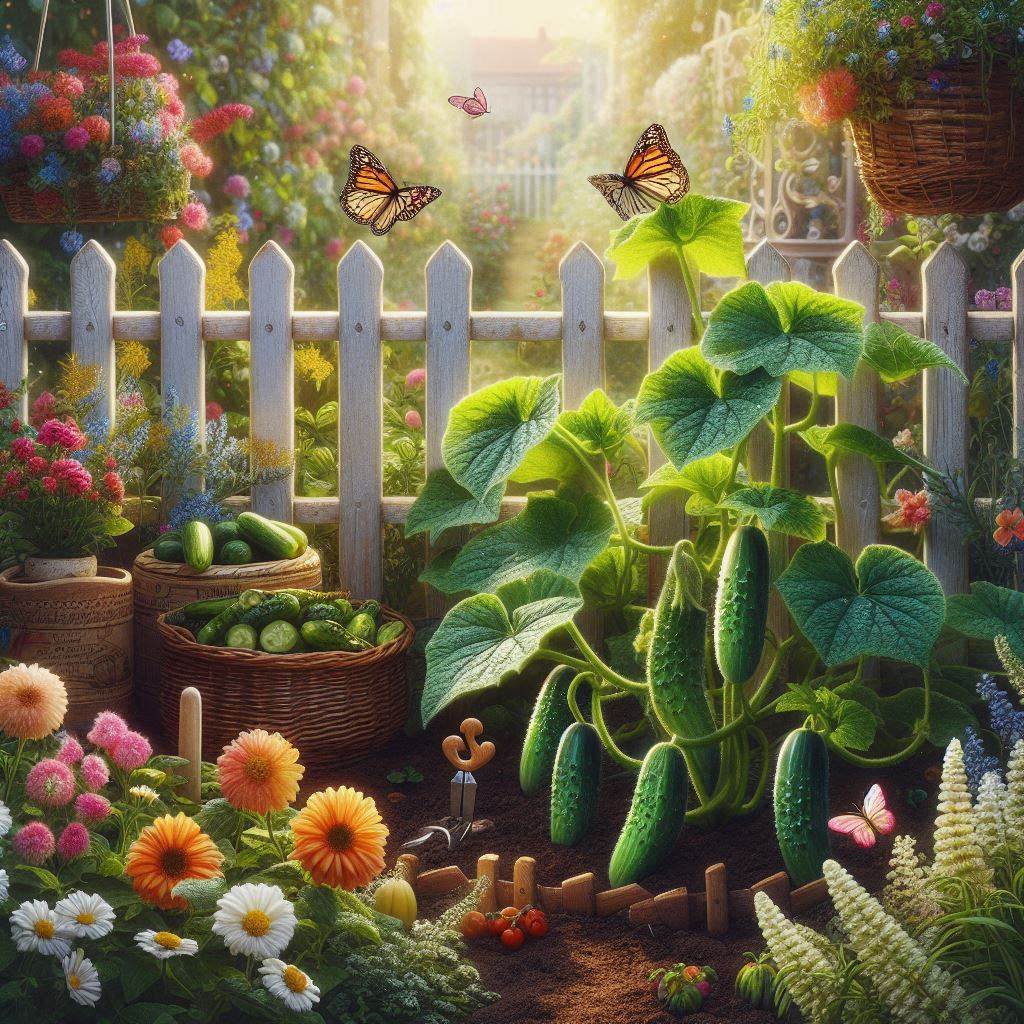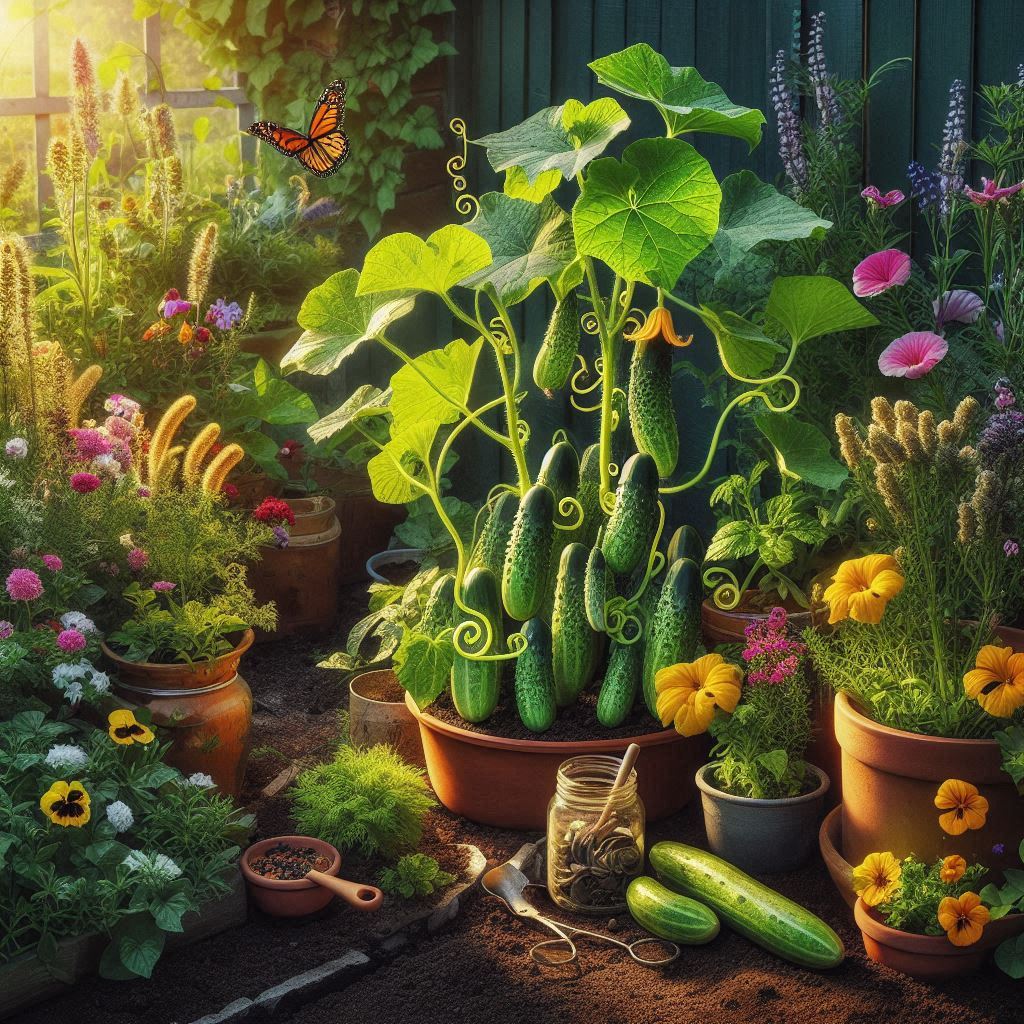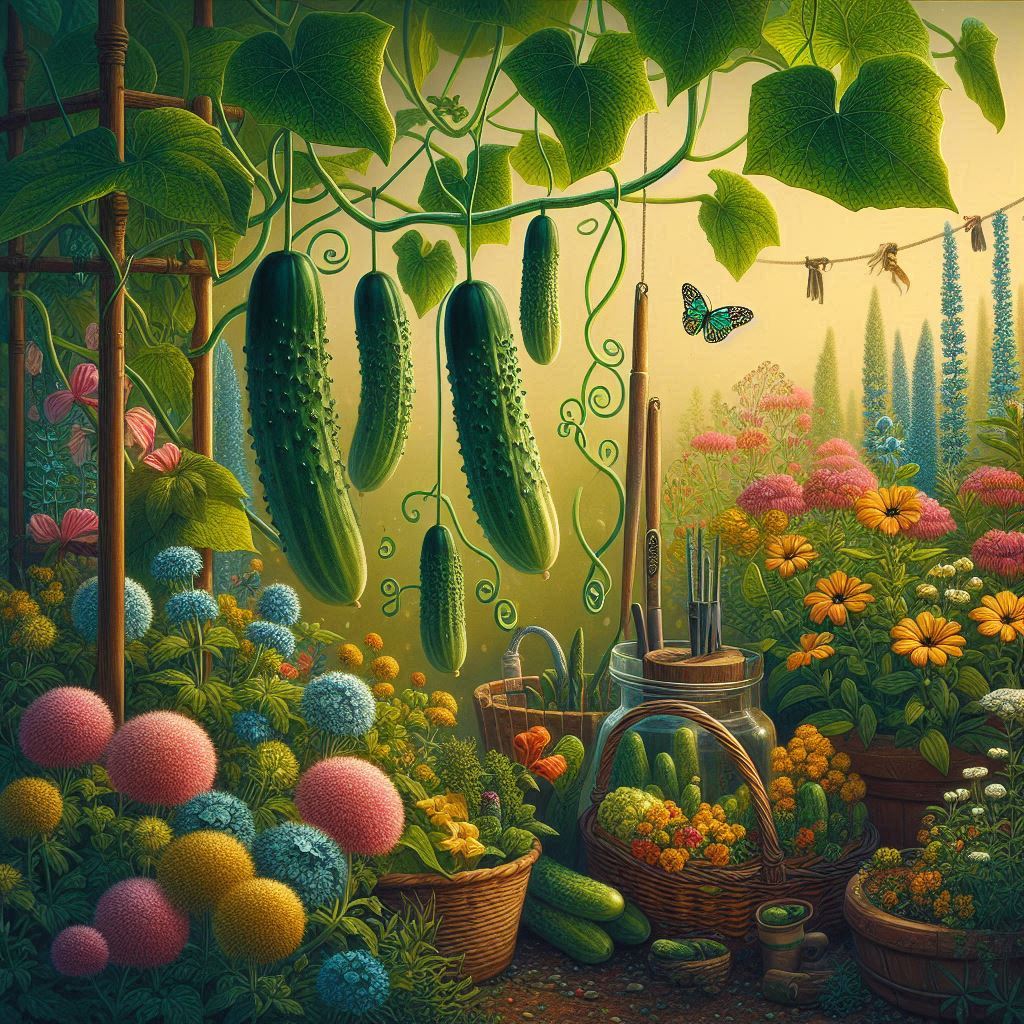Cucumbers are a favorite summertime vegetable, known for their refreshing taste and versatility in the kitchen. But sometimes, as you nurture your cucumber plants, you might encounter a frustrating sight: curled cucumbers. While these curvy veggies might look a little odd, they are usually perfectly safe to eat. However, understanding the reasons behind the curl can help you prevent it and ensure a bountiful harvest of straight, delicious cucumbers.
This article unravels seven main culprits behind curled cucumbers and provides solutions to keep your cucumbers growing long and strong.
The Mystery of the Curled Cucumber
Cucumbers, like all living things, thrive under specific conditions. When those conditions aren’t met, the plant can exhibit signs of stress, one of which is the development of misshapen fruit. While a curled cucumber doesn’t necessarily affect its taste or safety for consumption, it can be aesthetically displeasing and might indicate a deeper issue within the plant.
Let’s explore the seven most common reasons why cucumbers decide to take a twisty turn:
7 Culprits Behind Curled Cucumbers
1. Inconsistent Watering
Cucumbers are thirsty plants that require consistent moisture throughout their growing season. However, both underwatering and overwatering can lead to curling.
- Underwatering: When deprived of water, the cucumber plant prioritizes survival mechanisms. This can lead to uneven growth in the developing fruit, causing it to curl as it tries to conserve moisture.
- Overwatering: Excessive water can damage the roots, hindering their ability to take up water and nutrients effectively. This stress can also manifest as curled fruit.
Solution: Employ Consistent Watering Techniques:
- Deep watering: Water your cucumber plants thoroughly at the base, allowing the water to soak down to the root zone. Aim to water until the top inch of soil feels moist.
- Frequency: The frequency of watering will depend on your climate and soil type. A good rule of thumb is to water deeply every 2-3 days, or when the top inch of soil feels dry.
- Avoid midday watering: Water your cucumbers early in the morning or in the evening to minimize water loss from evaporation during the hottest part of the day

2. Lack of Nutrients
Cucumbers need a balanced diet of essential nutrients like nitrogen, phosphorus, and potassium for healthy growth. Deficiencies in any of these elements can negatively affect fruit development, leading to curling.
- Nitrogen deficiency: Nitrogen is crucial for healthy leaf growth. When deficient, the plant allocates resources away from fruit development, resulting in stunted growth and potential curling.
- Phosphorus deficiency: Phosphorus plays a vital role in root development and overall plant health. When lacking, cucumbers may show signs of stunted growth, weak stems, and misshapen fruit.
- Potassium deficiency: Potassium is essential for proper water management within the plant. A lack of potassium can lead to wilting, uneven growth, and, you guessed it, curling cucumbers.
Solution: Proper Nutrient Management:
- Balanced fertilizer: Use a balanced fertilizer formulated for vegetables during the growing season. Follow the application instructions on the product label carefully.
- Compost: Adding compost to your soil before planting and throughout the growing season can provide a slow-release source of nutrients for your cucumber plants.
- Signs of deficiency: Be observant. Look for signs of nutrient deficiency like yellowing leaves, stunted growth, and poor fruit development. If you suspect a deficiency, adjust your fertilization plan accordingly.
3. Direct Sunlight
While cucumbers need plenty of sunlight to thrive, too much direct sun exposure can be detrimental.
- Heatstroke: Excessive sunlight can lead to overheating and dehydration in the plant, causing uneven growth and curling in the developing fruit.

Solution: Providing Shade When Needed:
- Shade cloths: If your cucumber plants are exposed to intense afternoon sunlight, consider using shade cloths to provide some protection during the hottest part of the day.
- Row covers: Row covers can also be helpful, especially early in the season, to protect young plants from harsh sunlight and temperature extremes.
4. Pollination Issues
Proper pollination is vital for successful fruit development in cucumbers. Various factors can hinder this process, resulting in misshapen fruit.
- Poor weather conditions: Cool temperatures, heavy rain, or strong winds can disrupt pollinator activity, leading to incomplete pollination and potentially misshapen cucumbers.
- Lack of pollinators: If there aren’t enough bees or other pollinators visiting your cucumber flowers, pollination may be compromised, increasing the risk of curled fruit.
Solution: Use Hand Pollination Techniques:
- Nature’s helping hand: In ideal conditions, bees and other pollinators will take care of the pollination process for you.
- Hand pollination: If you suspect poor pollination due to unfavorable weather or lack of pollinators, you can hand pollinate your cucumber flowers. Use a small cotton swab to gently brush the pollen from the male flower (with a stamen) to the female flower (with a pistil). Repeat this process for several flowers to increase the chances of successful pollination.
5. Pest Damage
Sap-sucking pests like aphids, squash bugs, and thrips can damage developing cucumbers as they feed. This damage can cause the fruit to grow unevenly, leading to curling.
Solution: Effective Pest Control Methods:
- Organic methods: If you see signs of pests like aphids or squash bugs, try organic methods first. You can use insecticidal soap sprays, neem oil spray, or encourage natural predators like ladybugs.
- Inorganic methods: If the pest infestation is severe, you may need to resort to using an insecticidal spray specifically designed for vegetables. Always follow the instructions on the product label carefully and prioritize organic methods whenever possible.
6. Temperature Stress
Cucumbers are warm-season vegetables that thrive in temperatures between 65°F (18°C) and 85°F (29°C).
- Cold stress: When temperatures drop too low, cucumber development can be stunted, leading to misshapen fruit.
- Heat stress: Extremely hot temperatures can also stress the plant, causing uneven growth and curling in the cucumbers.
Solution: Maintaining Ideal Temperatures:
- Protecting from frost: In cooler climates, protect young cucumber plants from frost by using row covers or planting them in raised beds that retain heat better.
- Mulch: Apply a layer of organic mulch around the base of your cucumber plants to help retain moisture and regulate soil temperature.
7. Varietal Predisposition
While less common, some cucumber varieties are simply more prone to curling than others. This can be due to inherent genetic factors or specific growth requirements of the variety.
Bonus Tips for Straight and Delicious Cucumbers:
- Healthy Soil: Start with good-quality, well-drained soil. Amending your soil with compost or aged manure can improve its fertility and drainage.
- Right Variety: Choose cucumber varieties that are known for their resistance to curling and are well-suited to your climate.
- Early Detection: Regularly inspect your cucumber plants for signs of stress or pest problems. Addressing issues early can prevent them from causing severe damage and fruit curling.
- Harvesting at Peak: Harvest your cucumbers when they are young and tender, typically when they reach 6-8 inches in length. Regularly harvesting encourages further fruit production and reduces stress on the plants.
Conclusion: Happy Cucumbers, Happy Harvest!
When you understand the reasons behind curled cucumbers, you can implement the right solutions and create a healthy and supportive environment for your cucumber plants to thrive. With consistent care and attention, you’ll be well on your way to enjoying a bountiful harvest of straight, delicious cucumbers throughout the growing season. Remember, even if you encounter a few curvy cucumbers here and there, don’t despair! They are usually safe to eat and can still be enjoyed in your favorite recipes. So, get out there, nurture your cucumber plants, and enjoy the satisfaction of a successful and rewarding vegetable gardening experience!

